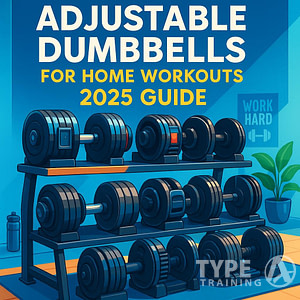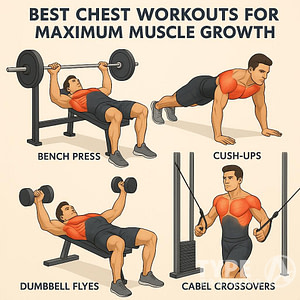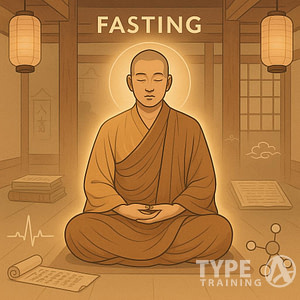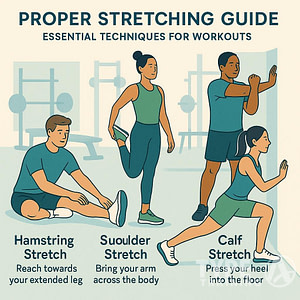If you are a senior who has been diagnosed with osteoporosis, you may be wondering what steps you can take to manage your symptoms and maintain your quality of life. Fortunately, exercise can be an effective way to manage osteoporosis and prevent falls and fractures. In fact, regular exercise can help to improve bone density, balance, and muscle strength, all of which can help to reduce your risk of falls and fractures.
Osteoporosis is a condition that causes your bones to become weak and brittle, which can increase your risk of fractures. This condition is particularly common in seniors, and it can be caused by a variety of factors, including hormonal changes, poor nutrition, and lack of exercise. Fortunately, there are many steps you can take to manage your osteoporosis symptoms, and exercise is one of the most effective.
Regular exercise can be an effective way to manage your osteoporosis symptoms and reduce your risk of falls and fractures. There are many different types of exercise that can be beneficial for seniors with osteoporosis, including weight-bearing exercises, resistance training, and balance exercises. By working with a personal trainer and following exercise safety precautions, you can develop a safe and effective exercise routine that meets your unique needs and helps you to maintain your quality of life.
Key Takeaways
- Exercise can be an effective way to manage osteoporosis and prevent falls and fractures.
- Regular exercise can help to improve bone density, balance, and muscle strength, all of which can help to reduce your risk of falls and fractures.
- There are many different types of exercise that can be beneficial for seniors with osteoporosis, including weight-bearing exercises, resistance training, and balance exercises.
Understanding Osteoporosis and Exercise for Seniors
Popular posts:
Osteoporosis is a condition that weakens your bones, making them fragile and more likely to break. It’s often called a “silent disease” because it can develop slowly over several years without any noticeable symptoms until a bone breaks.
As you age, your bones naturally lose some of their density, making them weaker and more prone to fractures. However, people with osteoporosis lose bone mass at a much faster rate than normal, which can lead to severe bone loss and fractures.
Several factors can increase your risk of developing osteoporosis, including family history, being underweight, taking corticosteroids, proton pump inhibitors, thyroid hormone, and certain cancer treatments. Women are also more likely to develop osteoporosis than men, especially after menopause when estrogen levels decline.
The best way to prevent osteoporosis is to maintain good bone health throughout your life. This includes eating a balanced diet rich in calcium and vitamin D, engaging in regular weight-bearing exercise, and avoiding smoking and excessive alcohol consumption.
If you have been diagnosed with osteopenia or osteoporosis, it’s important to work with your healthcare provider to develop a treatment plan that includes regular exercise, medication, and lifestyle changes. With the right care, you can slow down or even reverse bone loss and build new bone, reducing your risk of fractures and improving your overall bone health.
Risk Factors of Osteoporosis
Osteoporosis is a bone-weakening disorder that can lead to fractures in the hip and spine, making it difficult to move freely and live independently. Several factors can increase the likelihood of developing osteoporosis, including:
- Age: As you age, your bones naturally become thinner and weaker, making you more susceptible to osteoporosis. Women over 50 and men over 70 are at the highest risk of developing osteoporosis.
- Gender: Women are more likely to develop osteoporosis than men because they have less bone tissue and lose bone mass more rapidly during menopause.
- Low body weight: Having a low body mass index (BMI) or being underweight increases the risk of developing osteoporosis.
- Family history: If your parents or siblings have osteoporosis, you are more likely to develop it too.
- Medical conditions: Certain medical conditions and treatments can increase the risk of osteoporosis, including hormone imbalances, thyroid problems, and some medications used to treat cancer, seizures, and gastric reflux disease.
- Lifestyle factors: Lifestyle choices can also play a role in the development of osteoporosis. Smoking, excessive alcohol consumption, and a sedentary lifestyle can all increase the risk of osteoporosis.
- Hormone levels: Low levels of estrogen in women and low levels of testosterone in men can contribute to the development of osteoporosis.
- Falls: Falling can increase the risk of fractures, especially in those with weakened bones.
It is important to note that not all risk factors are within your control. However, there are steps you can take to reduce your risk of developing osteoporosis, such as maintaining a healthy weight, exercising regularly, getting enough calcium and vitamin D, and avoiding smoking and excessive alcohol consumption.
Benefits of Exercise for Seniors with Osteoporosis
If you have osteoporosis, exercising regularly can help you maintain your strength, improve your balance, decrease your risk of broken bones, improve your posture, and lessen your pain. Engaging in physical activity can help you stay active and move freely, which can improve your overall quality of life and help you maintain your independence.
Strength training is an excellent way to strengthen your muscles and slow bone loss. Weight-bearing exercises, such as walking, jogging, dancing, and stair climbing, can help maintain bone density. High-impact exercises, such as jumping and running, can also help build bone density, but they may not be suitable for everyone. Consult with your doctor or physical therapist before starting any high-impact exercises.
Balance exercises are essential for seniors with osteoporosis, as they can help prevent falls. Simple exercises like standing on one foot or walking heel-to-toe can improve your balance. Resistance bands and elliptical training machines are also great options for improving balance.
Flexibility exercises, such as yoga and stretching, can help improve your range of motion and prevent muscle stiffness. Gardening, cycling, and other low-impact activities can also be fun ways to stay active and maintain muscle strength.
Regular exercise can help you maintain your independence and improve your overall quality of life. Start slowly and gradually increase the intensity and duration of your workouts as your body adjusts. Remember to consult with your doctor or physical therapist before starting any new exercise program.
Preventing Falls and Fractures
Falls and fractures are common among seniors with osteoporosis, but there are ways to prevent them. Here are some tips to help you stay safe:
Improve Your Balance
Improving your balance is one of the best ways to prevent falls. Balance exercises like standing on one foot or walking heel-to-toe can help you improve your balance and reduce your risk of falling.
Prevent Falls
Preventing falls is key to avoiding fractures. Here are some tips to help you prevent falls:
- Keep your home free of clutter and well-lit.
- Install grab bars in your bathroom and shower.
- Wear
shoes with non-slip soles. - Use a cane or walker if you need one.
Maintain Your Mobility
Maintaining your mobility is important for preventing falls. Regular exercise can help you stay mobile and reduce your risk of falling. Walking, swimming, and yoga are all great options for seniors with osteoporosis.
Protect Your Waist
Protecting your waist is important for preventing fractures. Avoid bending over at the waist to pick things up. Instead, squat down and use your legs to lift objects.
By following these tips, you can reduce your risk of falls and fractures and stay safe and healthy.
Types of Exercise for Seniors with Osteoporosis
When it comes to exercise for seniors with osteoporosis, there are several types of exercises that can be beneficial. Here are some of the most effective exercises for seniors with osteoporosis:
Weight-bearing exercises
Weight-bearing exercises involve activities where your feet and legs bear your body weight. Examples include walking, jogging, dancing, and tennis. These exercises help to improve bone density and reduce the risk of fractures.
Resistance training exercises
Resistance training exercises, like weightlifting and resistance bands, are also beneficial for seniors with osteoporosis. These exercises help to build and maintain muscle mass, which can help to support your bones and reduce the risk of falls.
Flexibility exercises
Flexibility exercises, like stretching and yoga, can help to improve your range of motion and reduce the risk of falls. These exercises can also help to improve your balance and coordination.
Balance and coordination exercises
Balance and coordination exercises, like tai chi and Pilates, can help to improve your balance and reduce the risk of falls. These exercises can also help to improve your posture and reduce the risk of back pain.
When it comes to exercise for seniors with osteoporosis, it’s important to find activities that are safe and enjoyable for you. Consult with your healthcare provider before starting any exercise program. It’s also important to start slowly and gradually increase your activity level over time. Remember to listen to your body and stop any exercise that causes pain or discomfort.
Cardiovascular exercise, like running and jumping, can also be beneficial for seniors with osteoporosis. However, it’s important to choose activities that are low-impact and safe for your bones. Golf can also be a good exercise for seniors with osteoporosis, as it is low-impact and can help to improve your balance and coordination.
Strength training exercises are also important for seniors with osteoporosis. However, it’s important to use caution when lifting weights and to start with light weights and gradually increase over time.
In summary, there are several types of exercises that can be beneficial for seniors with osteoporosis, including weight-bearing exercises, resistance training exercises, flexibility exercises, and balance and coordination exercises. Consult with your healthcare provider before starting any exercise program and start slowly and gradually increase your activity level over time.
Osteoporosis and Resistance Training
Resistance training, also known as strength training, can be an effective way to improve bone density, muscle strength, and balance in seniors with osteoporosis. In fact, research has shown that resistance training can help slow down bone loss and reduce the risk of fractures.
When incorporating resistance training into your exercise routine, it’s important to start with light weights and gradually increase the weight as your strength improves. It’s also important to use proper form and technique to avoid injury and maximize the benefits of the exercise.
Here are some recommended resistance training exercises for seniors with osteoporosis:
- Squats: Stand with your feet shoulder-width apart and hold a weight in each hand. Slowly lower yourself into a squat, keeping your back straight and your knees over your ankles. Return to a standing position and repeat.
- Lunges: Stand with your feet hip-width apart and hold a weight in each hand. Step forward with one foot and lower yourself into a lunge, keeping your back straight and your front knee over your ankle. Return to a standing position and repeat with the other leg.
- Chest press: Lie on a bench or the floor with a weight in each hand. Slowly lift the weights up towards the ceiling, keeping your elbows close to your body. Lower the weights back down to the starting position and repeat.
- Shoulder press: Stand with your feet shoulder-width apart and hold a weight in each hand. Slowly lift the weights up towards the ceiling, keeping your elbows close to your body. Lower the weights back down to the starting position and repeat.
Remember to always consult with your doctor before starting any new exercise routine, especially if you have osteoporosis. They can help you determine the best exercises for your specific needs and ensure that you are exercising safely and effectively.
Exercise Modifications for Seniors with Osteoporosis
If you have osteoporosis, exercise can help you maintain bone density, improve balance, and reduce the risk of fractures. However, because of the increased risk of fracture associated with osteoporosis, it’s important to modify your exercise routine to avoid high-impact activities or movements that could cause injury. Here are some exercise modifications that can help you stay active and safe:
Chair exercises
Chair exercises are a great way to improve strength and flexibility while reducing the risk of falls. You can use a chair for support while doing exercises such as seated leg lifts, arm curls, and shoulder rolls. These exercises are low-impact and can be done at home with little to no equipment.
Water exercises
Water exercises are a great option for seniors with osteoporosis because they provide resistance without putting stress on the joints. Water aerobics, swimming, and water walking are all low-impact activities that can help improve bone density and reduce the risk of falls.
Resistance bands
Resistance bands are a great tool for building strength without putting stress on the joints. They come in different strengths and can be used for a variety of exercises, including arm curls, leg lifts, and chest presses. Resistance bands are lightweight and portable, making them a great option for at-home workouts.
Yoga blocks
Yoga blocks can be used to modify yoga poses and provide support during balance exercises. They can also be used to help with stretching and improve flexibility. If you have osteoporosis, it’s important to avoid poses that put stress on the spine, such as forward bends and twists.
Wall support
Using a wall for support can help you maintain balance while doing exercises such as squats or leg lifts. You can also use a wall for support during stretches or yoga poses. Make sure to choose a sturdy wall and avoid using chairs or other unstable objects for support.
Remember to always consult with your doctor before starting a new exercise routine, especially if you have osteoporosis. They can help you determine which exercises are safe and appropriate for your individual needs.
Here’s a sample workout routine for a senior with osteoporosis:
- Wall push-ups: 2 sets of 10-12 reps, with 30 seconds of rest between sets.
- Stand facing a wall with your feet shoulder-width apart.
- Place your palms on the wall at shoulder height and shoulder-width apart.
- Bend your elbows and lower your chest towards the wall, then push back up to the starting position and repeat.
- Bodyweight squats: 2 sets of 10-12 reps, with 30 seconds of rest between sets.
- Stand with your feet shoulder-width apart.
- Bend your knees and lower your hips until your thighs are parallel to the ground, creating a 90-degree angle.
- Push back up to the starting position and repeat.
- Seated rows with resistance band: 2 sets of 10-12 reps, with 30 seconds of rest between sets.
- Sit on a chair or bench with your feet flat on the ground.
- Wrap a resistance band around your feet and hold the ends with your hands.
- Pull the band towards your chest, squeezing your shoulder blades together, then release and repeat.
- Wall angels: 2 sets of 10-12 reps, with 30 seconds of rest between sets.
- Stand with your back against a wall and your arms at your sides.
- Slowly raise your arms up to shoulder height, keeping your elbows and wrists against the wall.
- Lower your arms back down to the starting position and repeat.
Seniors with osteoporosis should start with lighter weights and lower intensity exercises before gradually increasing the weight and intensity. It is also important to maintain proper form, engage the correct muscles, and avoid jerky or sudden movements. Seniors should also listen to their bodies and stop exercising if they experience pain or discomfort.
Exercise Safety and Precautions
When exercising with osteoporosis, it is important to take safety precautions to prevent falls and fractures. Here are some tips to keep in mind:
Consult with Your Healthcare Provider
Before starting any exercise program, consult with your healthcare provider. They can help you determine the best exercises for your condition and provide guidance on how to exercise safely.
Choose Low-Impact Exercises
Low-impact exercises are best for seniors with osteoporosis. These exercises put less stress on your bones and joints, reducing the risk of fractures. Examples of low-impact exercises include walking, swimming, and cycling.
Avoid Bending and Twisting
Bending and twisting can put stress on your spine, increasing the risk of fractures. When lifting objects, bend at the knees and keep your back straight. Avoid twisting your torso while lifting.
Take Precautions with Advanced Osteoporosis
If you have advanced osteoporosis, you may need to take extra precautions when exercising. Your healthcare provider can help you determine the best exercises for your condition and provide guidance on how to exercise safely.
Work with a Care Provider
Working with a care provider, such as a physical therapist, can help you exercise safely and prevent falls and fractures. They can provide guidance on proper form and technique and help you modify exercises to meet your specific needs.
By taking these precautions and working with your healthcare provider and care provider, you can exercise safely and reduce the risk of falls and fractures.
Working with a Personal Trainer
If you have osteoporosis, working with a personal trainer can be a great way to stay active and safe. A personal trainer can help you design a workout plan that is tailored to your specific needs and goals. They can also ensure that you are performing exercises correctly and safely, which is essential when you have osteoporosis.
When working with a personal trainer, it is important to communicate your needs and concerns. Let them know about any broken bones you have had in the past or any areas of your body that are particularly weak or painful. This will help them design a workout plan that is safe and effective for you.
Your personal trainer may focus on exercises that improve your posture, range of motion, flexibility, and balance. They may also incorporate free weights, body weight exercises, or swimming to help you build strength and improve your overall fitness level.
Corrective exercise is another area where a personal trainer can be particularly helpful. These exercises are designed to correct muscle imbalances and improve joint function. By incorporating corrective exercises into your workout routine, you can reduce your risk of injury and improve your overall quality of life.
In summary, working with a personal trainer can be an excellent way to stay active and safe when you have osteoporosis. They can help you design a workout plan that is tailored to your specific needs and goals, and ensure that you are performing exercises correctly and safely. By incorporating a variety of exercises, including corrective exercises, you can improve your posture, range of motion, flexibility, balance, and overall fitness level.
Frequently Asked Questions
What exercises increase bone density in the spine?
Weight-bearing exercises that force your body to work against gravity can help increase bone density in the spine. Examples include walking, climbing stairs, playing tennis, and dancing. Higher-impact activities can strengthen bone more than lower-impact exercises, but it’s important to find activities that are safe and enjoyable for you.
What are some osteoporosis-friendly exercises for seniors?
There are many osteoporosis-friendly exercises that seniors can do, including walking, low-impact aerobics, swimming, and cycling. Resistance training with light weights or resistance bands can also help build muscle and strengthen bones. It’s important to consult with a healthcare professional before starting any exercise program.
What is the most appropriate exercise for osteoporosis?
The most appropriate exercise for osteoporosis depends on your individual needs and health status. Weight-bearing exercises, resistance training, and balance exercises can all be beneficial for building bone density, improving muscle strength, and reducing the risk of falls. It’s important to work with a healthcare professional or certified exercise professional to design an exercise program that is safe and effective for you.
What exercises should be avoided with osteoporosis?
Exercises that involve twisting, bending forward, or high-impact activities like jumping should be avoided with osteoporosis. These movements can increase the risk of fractures in people with weakened bones. It’s important to modify exercise programs like yoga and Pilates to avoid loaded flexion and twisting movements.
What is the best activity for older adults to avoid osteoporosis?
The best activity for older adults to avoid osteoporosis is weight-bearing exercise. This type of exercise involves working against gravity, which helps to strengthen bones. Walking, hiking, dancing, and playing tennis are all examples of weight-bearing exercises. It’s also important to get enough vitamin D and calcium in your diet to support bone health.
What are some weight-bearing exercises to do at home for osteoporosis?
There are many weight-bearing exercises that you can do at home for osteoporosis, including walking, jogging in place, stair climbing, and dancing. You can also use light weights or resistance bands to do strength-training exercises like bicep curls, overhead presses, and squats. It’s important to start slowly and gradually increase the intensity and duration of your workouts as you build strength and endurance.















